THE UNIVERSITY OF ARIZONA OPHTHALMOLOGY RESIDENCY PROGRAM FACT SHEET
OUR PROGRAM AT A GLANCE
- Rotations with affiliate private practices in the subspecialties of cornea, refractive surgery, and retina. This provides a valuable private practice perspective on how ophthalmology is approached outside of academics.
- Our group has a longstanding history of a collaborative culture and comradery among residents.
- Salaries for 2025-2026: PGY-1 $66,500; PGY-2 $69,000; PGY-3 $72,000; PGY-4 $76,000
CURRICULUM
-
Organized Wet Labs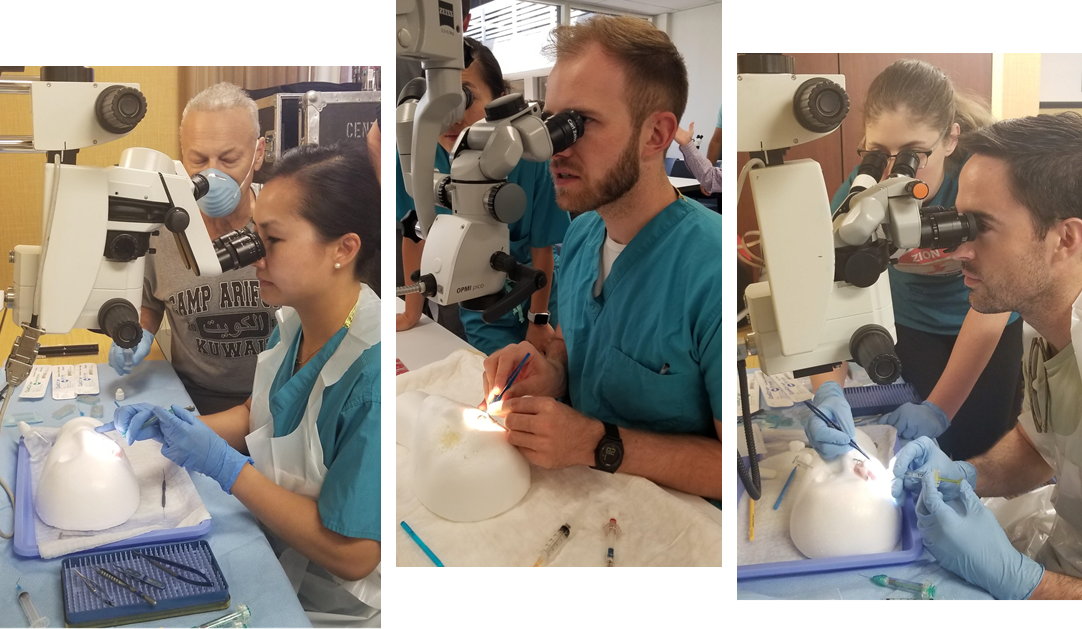
- Internal - yearly cataract and refractive surgery wet labs held at the administrative building or in one of the local private practices.
- External - a variety of industry and non-industry sponsored wet labs to further the development of phacoemulsification skills.
- Dedicated Friday morning didactic sessions from 7:00 AM to 11:30 AM in which the residents have no scheduled duties.
- Grand Rounds or QIPs held every Wednesday morning from 7:00 AM to 8:30 AM.
- Numerous study aids are available, including a yearly program-paid subscription to OphthoQuestions, a program subscription to online BCSC books, and online access to over 50 ophthalmology textbooks.
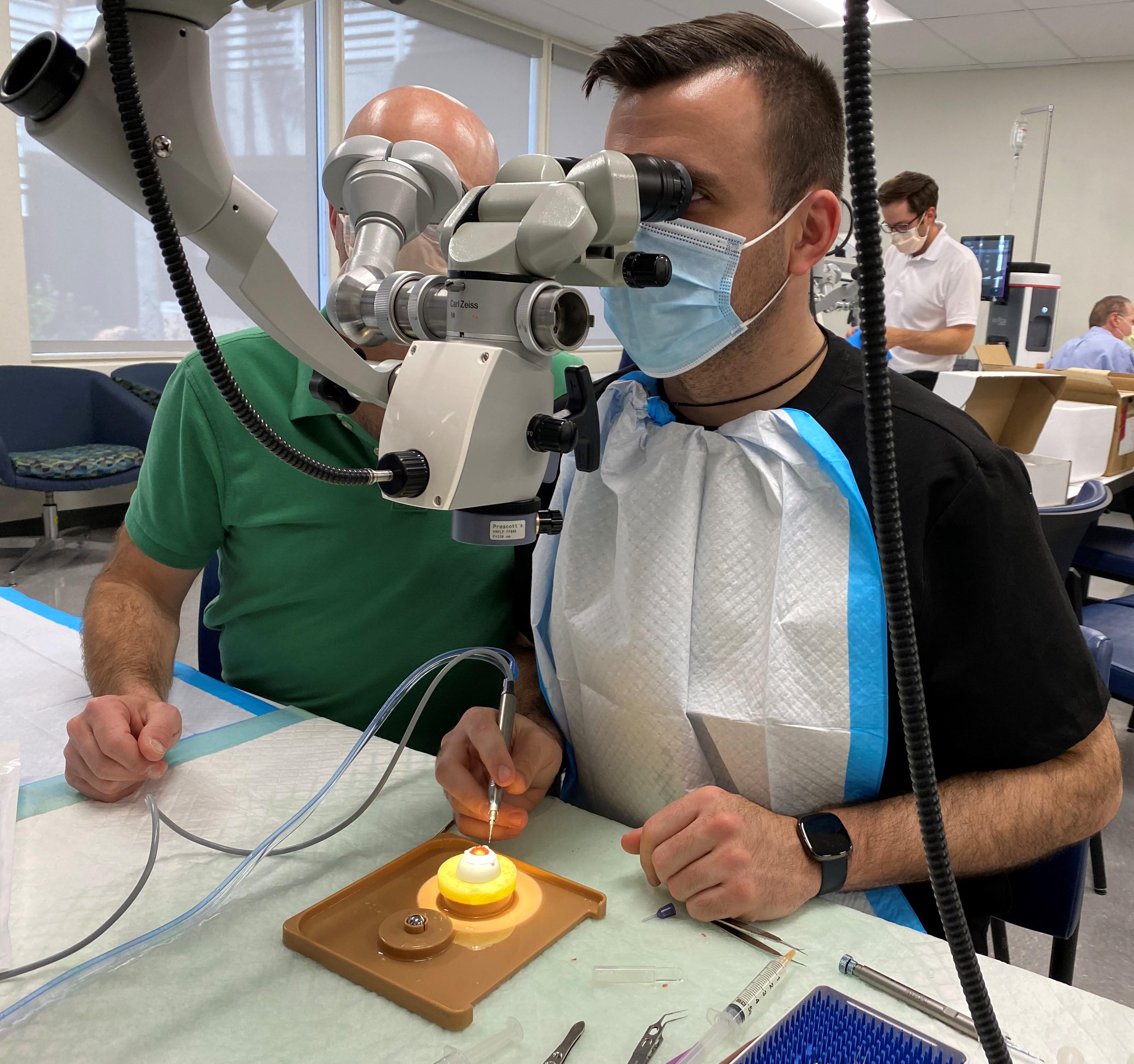 |
 |
- The senior residents organize an in-house OKAP review course yearly. Faculty are invited to present. The residents have dedicated time during working hours to attend these sessions.
- Senior residents are provided up to $1,200 to attend the annual meeting of the American Academy of Ophthalmology.
- Multiple institutionally funded Well-Being events are held every year. Banner provides $50 per employed physician who attends the function. The events may include one alcoholic beverage per resident and may involve non-Banner employees such as faculty, family and friends.
- Travel funds are available for presentations at national meetings if the resident is the primary author and a faculty member sponsors the project.
- Call Requirements: One in 8 days averaged for primary call for PGY-2 and PGY-3 residents and 1 in 4 days averaged for second (back-up) call during the PGY-4 year. A meal card for Banner hospitals is available for call.
- Residency Curriculum by Year
- PGY-1: We are excited to have an integrated PGY-1 year. It occurs predominantly at the Southern Arizona Veterans Affairs Health Care System, which is one of our most popular sites and the highest impact for learning. We have constructed a curriculum that will provide the resident with a non-ophthalmic perspective of diseases commonly managed by ophthalmologists. Each resident will rotate for 13 weeks in ophthalmology, 8 weeks in emergency medicine, 9 weeks in internal medicine, 11 weeks in otolaryngology-head and neck surgery, 5 weeks in neurology, and 6 weeks in rheumatology.
- PGY-2: The PGY-2 starts with buddy call shadowing the more senior residents for the first month. Also, during the first few weeks, dedicated time is devoted toward learning the basics. Most of the clinical time is at the main Alvernon site assisting with patients in the faculty clinic and running the resident clinics with faculty oversight. General ophthalmology, cornea, glaucoma, neuro-ophthalmology, pediatrics, and retina clinics are attended. Two months are served on the consults service, which is staffed by University faculty. Greater than 90% of the consults service is at Banner University Medical Center-Tucson Campus. An average of 1 night in 8 is required for first call. Each resident averages 3 grand rounds presentations per year, with more occurring for PGY-2 residents and progressively fewer in the last two years. Dedicated didactic sessions are held every Friday morning from 7:00 AM to 11:30 AM at the Alvernon administrative building. Continuity clinics at the SAVAHCS occur once a week. Additionally, a retina rotation at the SAVAHCS is part of the PGY-2 and PGY-3 curriculum. Finally, the residents spend time with a private cataract and refractive practice where they gain exposure to keratorefractive surgery and world-renowned cataract surgeons.
- PGY-3: During PGY-3, residents spend time in cornea and retina private practices. These are close to the main Alvernon clinic and highly regarded by the residents. PGY-3 residents may choose to attend a number of internal and external cataract courses during this year.
- PGY-4: Nine months of the senior year occurs at the SAVAHCS where the PGY-4 residents run general, cornea, glaucoma and retina clinics with faculty oversight. During the remaining three months, the senior residents serve as the Chief Resident where they have administrative time, as well as participating in clinics at the Alvernon outpatient clinic. The chief works closely with the program coordinator to manage the duties of their co-residents. We find this an invaluable tool in learning leadership and management of human capital. The majority of the cataract surgery is obtained at SAVAHCS during this year. The SAVAHCS provides toric and multifocal lenses to appropriate patients free of charge. This allows residents a robust exposure to managing these premium IOLs. The same is true for iStents, and this allows residents to become certified for this procedure during residency. The seniors are encouraged to attend the annual AAO meeting, and funds are available to assist with this important learning opportunity.
- Surgical Volume: The residents meet or exceed the minimum number of procedures required by the ACGME.
- International Opportunities
We are fortunate to have a faculty member, Dr. Roy Swanson, as well as an associate, Dr. Mark Swanson, with practices in Agua Prieta and Hermosillo, Sonora, Mexico, who host our residents for international missions. The PGY-2 and PGY-3 residents participate in medical missions in the fall and spring, providing eye care and identifying patients who need cataract surgery. A few weeks after the medical missions, the PGY-4 residents participate in surgical missions, assisting with cataract surgery for the patients who were identified during the medical missions. This experience provides care to rural and underserved patients.
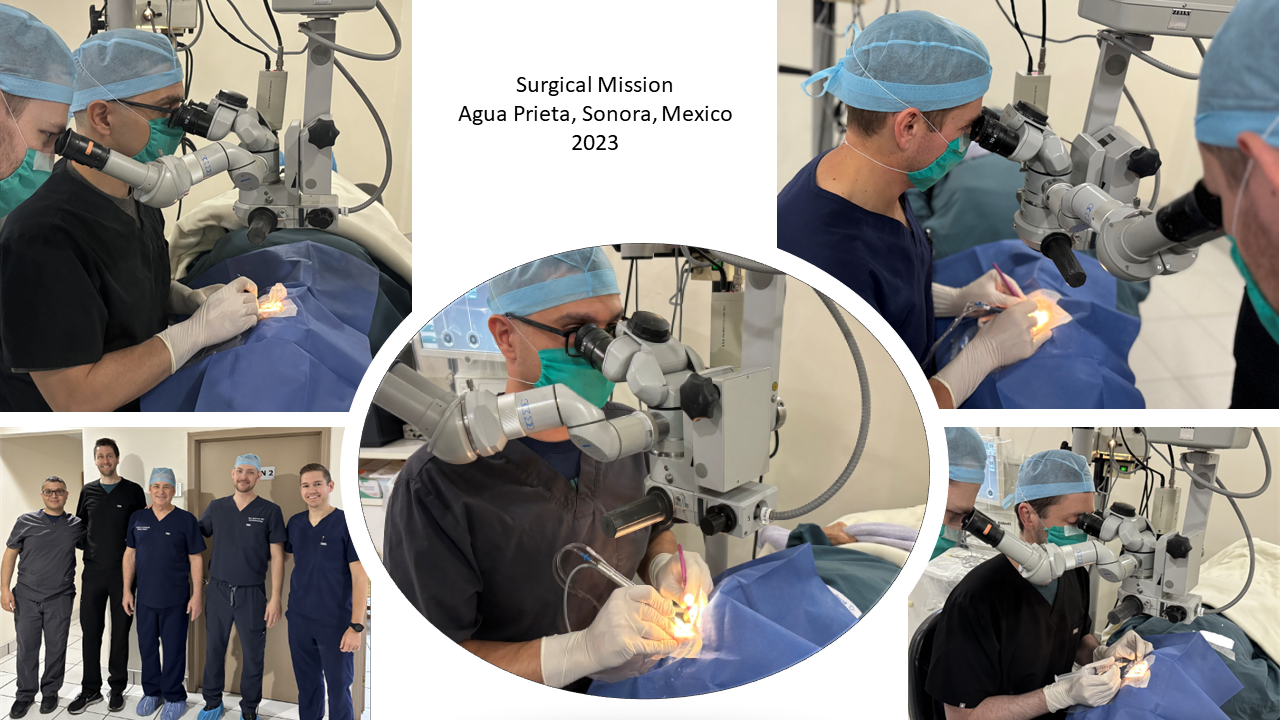
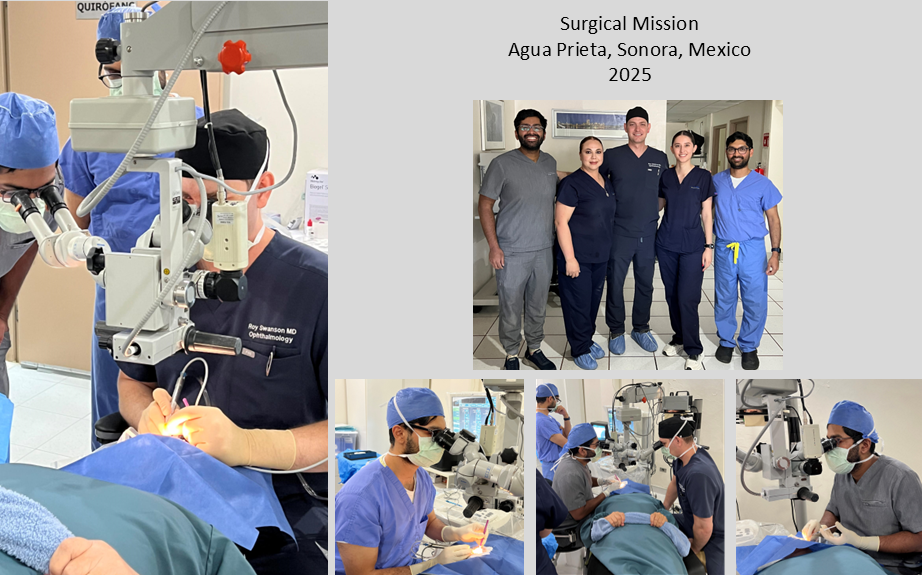

FACILITIES
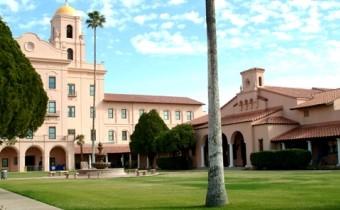 The Southern Arizona Veterans Administration Health Care System (SAVAHCS) is the jewel in our crown. It is a 295-bed hospital that is two miles from BUMC-South and 13 miles from BUMC-Tucson. That translates into a 20- to 30-minute commute from BUMC-Tucson and a 5-minute drive from BUMC-South. It serves ~170,000 veterans and is unlike any other Veterans facility. It provides specialists in cornea, glaucoma, neuro-ophthalmology, oculoplastics, and retina. SAVAHCS ophthalmology boasts state-of-the-art equipment in both the clinic and operating rooms.
The Southern Arizona Veterans Administration Health Care System (SAVAHCS) is the jewel in our crown. It is a 295-bed hospital that is two miles from BUMC-South and 13 miles from BUMC-Tucson. That translates into a 20- to 30-minute commute from BUMC-Tucson and a 5-minute drive from BUMC-South. It serves ~170,000 veterans and is unlike any other Veterans facility. It provides specialists in cornea, glaucoma, neuro-ophthalmology, oculoplastics, and retina. SAVAHCS ophthalmology boasts state-of-the-art equipment in both the clinic and operating rooms.
- Average of over 200 cataract surgeries per resident as primary surgeon. Torics and multifocal IOLs at no additional cost to the patient.
- Glaucoma exposure to trabeculectomies, tube shunts and MIGS procedures.
- Cornucopia of oculoplastics experience under the supervision of a seasoned ASOPRS-trained surgeon.
- Intravitreal injections, PRP and retinal experience well beyond the minimum requirements.
- Banner University Medical Centers

- In 2017, BUMC-Tucson added a new 9-story tower with an additional 200 beds and 19 operating rooms. Currently, there are a total of 479 beds. The majority of call occurs at this hospital. It has the only level 1 trauma center in the region.
- Banner UMC-South is a 220-bed hospital with a level 2 trauma center and is located 2 miles from the SAVAHCS and 13 miles from BUMC-Tucson.
- There are dedicated resident lounges at the Banner University Medical Center (BUMC) -Tucson and South Campus locations. The South Campus lounge is furnished with food, drink and a workout room.
- The Alvernon outpatient facility (707 N. Alvernon) is the clinical heart of the practice with over 20 exam rooms. It was completely renovated in 2019 and occupies the entire 3rd floor of the building.
- The 655 N. Alvernon administrative offices are conveniently located next to the Alvernon outpatient facility.
- There is a dedicated resident area with a ping pong table, computers, printer, projector, study areas, study carrels, lockers, and mailboxes. A lactation/resting room and kitchen with refrigerator and microwave are available near the resident area.
- In the administrative office is a well-equipped wet lab that includes a Centurion phaco machine, a Wild operating microscope, 3 cataract surgery simulation systems and 24/7 access. The residents have the ability to practice anterior vitrectomy, sutured IOLs, small pupil surgery, pupilloplasty, iris dialysis repair, capsular tension ring insertion, i-stents, Kahook Dual Blade goniotomy and other MIGS procedures. There are also clinical tools for simulation of Yag capsulotomy, SLT and LPI. We recently added simulations for lateral canthotomy/cantholysis, basic skin suturing and lid margin laceration repair.
- There is a lecture area in the administrative office, and two shared conference rooms in the building.
- There is free parking at all facilities.
TUCSON AND SURROUNDING AREA
- Low level of traffic relative to major metropolitan regions.
- Housing: Median home price in April 2025 was $385,000. Average rental price of a 1-bedroom apartment is $1,117/month and a 2-bedroom apartment is $1,311/month.
- The population of Tucson and the immediate surrounding area is 1,024,000 people.
- Trails
- Bike Trails: The Loop Trail is a recently completed circuit of 131 miles of connected, paved, multipurpose trails traversing the city and running along the scenic desert and dry river beds.
- Road bike lanes are prolific in Tucson, which is one of the most bike friendly towns in the US.
- Mountain biking and horseback riding trails are plentiful in Tucson and the surrounding region.
- Hiking Trails: There are 114 moderate trails in Tucson ranging from 0.7 to 59.4 miles and from 2,214 to 9,107 feet above sea level. Additionally, there are many easy and difficult trails.
- Climate
- Summer average - daily high/low - mid 70s to 100s
- Winter average - daily high/low - low 40s to low 70s
- Relatively low winds throughout the year
- Humidity - mid teens to high 30% with average yearly of 29.2%
- Sunny - average of 220 days with <20% cloud cover per day
- Downtown: There is a growing nightlife, well-positioned light rail service and a city commitment to continued revitalization of the historic downtown region.
- Food: In 2015, Tucson was named the first City of Gastronomy by the United Nations Educational, Scientific and Cultural Organization for the variety and quality of culinary options.
- Local/Nearby Attractions
- The Arizona-Sonora Desert Museum is a world-renowned zoo, natural history museum and botanical garden, all in one place. The museum is located on the west side of Tucson, near Saguaro National Park West and Tucson Mountain Park.
- The Titan Missile Museum is one of the few remaining cold war missile silos in the US. It is open for touring and a historic look back into the cold war.
- Pima Air and Space Museum features over 350 historical aircraft, from a Wright Flyer to a 787 Dreamliner. It sits on 80 acres and is affiliated with the Davis-Monthan Air force base.
- Mount Lemmon is a 30-minute drive from the base to the top of the 9,157’ mountaintop where the temperature is ~30 degrees cooler. Mount Lemmon boasts a ski slope, many hiking trails, camping and fishing.
- Fifty-six miles southwest of Tucson, one may tour the Kitt Peak National Observatory which houses over 20 optical and 2 radio telescopes. It is one of the largest gatherings of astronomical instruments in the northern hemisphere.
- Regional Attractions
- 5 hours from the Grand Canyon National Park
- 1 hour from popular ski resort (Mount Lemmon)
- 4 hours from popular ski resorts (Sunrise, Arizona Snowbowl)
- 8 hours from San Diego
- 10 national parks and 4 state parks in Arizona
- Tucson International Airport
- Parking - offsite $5.00/day, onsite $12-15/day
- Minimal lines
- Southwest Airlines direct flights to many destination cities
- Phoenix International Airport may be a cheaper alternative
- Educational Resources
- Home of the University of Arizona
- Two high schools repeatedly rated as top 20 in the nation
- Elementary schools and junior high magnet schools rated among the Nation’s top as well
- University of Arizona
- 56,544 students, which includes undergraduates, graduates, medical students
- Numerous museums, cultural events
- University of Arizona Centennial Hall hosts eight Broadway productions per year. There are also several local theater groups across Tucson.
- Sports: Wildcats PAC-12 sports include basketball, football, swimming, gymnastics, volleyball, softball, baseball and others. Additionally, the Tucson Roadrunners are a new member of the American Hockey League. Also, Phoenix is home to the Arizona Diamondbacks baseball and the Arizona Cardinals football teams.
FACULTY
Core Faculty
Jonathan M. Holmes, MD
Professor and Chairman
Adult StrabismusTodd Altenbernd, MD
Associate Professor, Program Director
GlaucomaRita Bhakta, OD
Assistant Clinical Professor
Pediatric OptometryJohn Christoforidis, MD
Clinical Professor
Surgical Retina/VitreousSarah Elhomosany, MD
Assistant Professor
Pediatric Ophthalmology and StrabismusMireille Jabroun, MD
Assistant Professor
Pediatric Ophthalmology and StrabismusCori Jones, OD
Assistant Professor
Comprehensive Optometry/Contact LensesIgor Kozak, MD
Professor
VitreoretinaBurke Lieppman, OD
Assistant Professor
Comprehensive OptometryRoy Swanson, MD
Assistant Professor
Comprehensive OphthalmologyPatrick Tsai, MD, MHA
Associate Clinical Professor
GlaucomaDan Twelker, OD, PhD
Professor
OptometryOvette Villavicencio, MD, PhD
Assistant Clinical Professor
CorneaMingwu Wang, MD, PhD
Clinical Professor
Cornea and External Diseases<Southern Arizona Veterans Administration Health Care System Faculty
Robert Lindberg, DO
Assistant Clinical Professor
Chief of SurgeryJillian Wang Colson, MD
Assistant Clinical Professor
Chief of Ophthalmology
Site Director, Ophthalmology Residency Program
General OphthalmologyShivi Agrawal, MD
Assistant Clinical Professor
Cornea and External DiseasesMichael W. Belin, MD
Clinical Professor
Cornea and External DiseasesLisa Lane, MD
Assistant Clinical Professor
Comprehensive OphthalmologyLeslie Neems, MD
Assistant Clinical Professor
OculoplasticsTanu Thomas, MD
Assistant Clinical Professor
Retina and VitreousOvette Villavicencio, MD, PhD
Assistant Clinical Professor
CorneaJin Zhang, MD
Assistant Clinical Professor
General OphthalmologyAffiliates/Associates
Benjamin Bakall, MD, PhD
Retina
Associated Retina ConsultantsDiego Calonje, MD
Surgical Retina/VitreousJohn Christoforidis, MD
Surgical Retina/Vitreous
Retina Specialists of Southern ArizonaMichael Diesenhouse, MD
Comprehensive Ophthalmology
Eye Associates of TucsonKathleen Duerksen, MD, FACS
Ophthalmic Plastics and Reconstructive SurgeryRobert Fintelmann, MD, FACS
Cornea, Cataract, Refractive Surgery
Midwestern University, PhoenixApril Harris, MD
Surgical Retina/Vitreous
Retina AssociatesMichael Henry, MD
Glaucoma
Oracle Eye Physicians and SurgeonsBrian Hunter, MD
Comprehensive Ophthalmology
Oracle Eye Physicians and SurgeonsCameron Javid, MD, MBA
Surgical Retina/Vitreous
Retina AssociatesAnthony Joseph, MD
Surgical Retina/Vitreous
Retina AssociatesKhin Kilgore, MD
Glaucoma
Arizona Eye ConsultantsLisa Lane, MD
Comprehensive Ophthalmology
Arizona Eye Consultants
Southern Arizona VA Health Care SystemJason Levine, MD
Glaucoma
Arizona Eye ConsultantsJeff Maltzman, MD
Glaucoma
Oracle Eye Physicians and SurgeonsAnn McColgin, MD
Cornea and External Disease
Cornea and Cataract AssociatesJoseph M. Miller, MD, MPH
Professor Emeritus
Pediatric Ophthalmology and Strabismus, OpticsLynn Polonski, MD
Ophthalmic Plastics and Reconstructive Surgery
Catalina Eye CareMaria Ramirez, MD
International Ophthalmology
Oftalmologos Asociados
Nogales, Sonora, MexicoTatyana Sherman, DO
Cornea and Refractive Surgery
Oracle Eye Physicians and SurgeonsMark Swanson, MD
International Ophthalmology
CLINICA Swann
Agua Prieta, Sonora, MexicoPatrick Tsai, MD, MHA
Glaucoma
Advanced Eye Care of Tucson
Banner University Medical Center-TucsonOvette Villavicencio, MD, PhD
Cornea
Catalina Eye Care
Southern Arizona VA Health Care System
Banner University Medical Center-TucsonMark Walsh, MD, PhD
Surgical Retina/Vitreous
Retina AssociatesMingwu Wang, MD, PhD
Cornea and External Diseases
Cornea and Cataract Associates
Banner University Medical Center-TucsonRyan Wong, MD
Surgical Retina/Vitreous
Retina Associates

